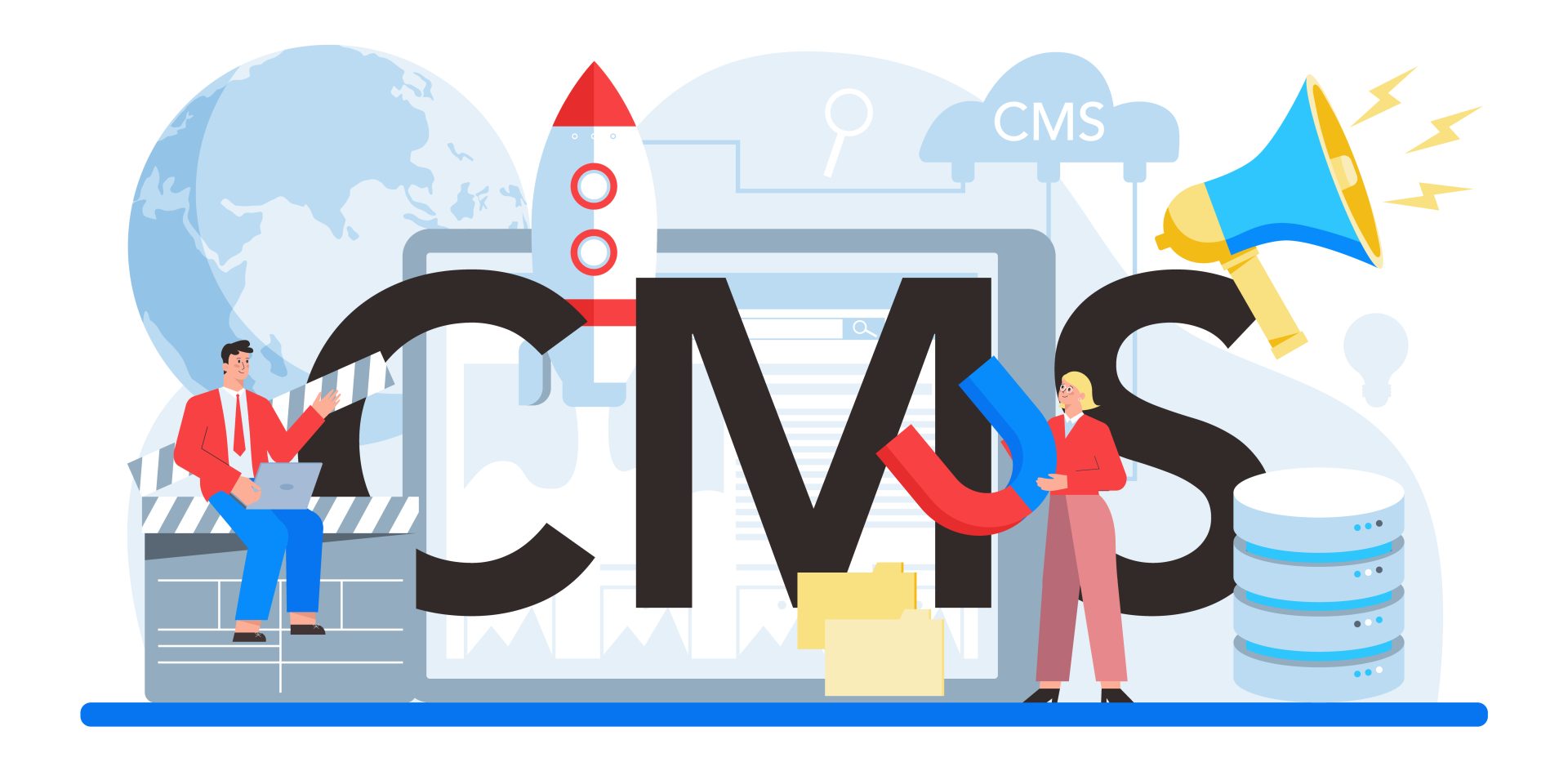Automating Lead-Stage Content Variants With Headless CMS
Generating interest isn’t enough, and crossing your fingers won’t do the trick, either. In lead management, it’s essential to give prospective buyers content relevant to their position in the funnel. For example, content provided to someone in the awareness stage is vastly different from what should be given to someone on the verge of purchasing.
In the past, creating funnel-specific content was a manual process; time-consuming with little chance to scale. But a headless CMS transforms all of that because companies can render lead-stage content variations on the fly and ensure correct distribution.
Where Lead-Stage Content Fits In
Leads are all on a journey. Sending the same message across the board gives a good chance that leads will be annoyed. Storyblok resolve relations allows marketers to dynamically connect related content pieces like testimonials, case studies, and product data so that each lead receives information relevant to their current stage.
Those in the awareness stage need educational content that introduces concepts and positions the brand as an authoritative expert. Those in the consideration stage need pros and cons, use cases, or product comparisons.
By the time they’ve reached the decision stage, they need validation through testimonials, pricing, and clear calls to action and FAQs. When brands fail to deliver what people want at the appropriate time, opportunities to convert disappear.
Lead-stage content ensures that intention and messaging are aligned. It understands that leads are not created equal, and that along the journey, personalization is critical, not just a one-time event. It operates at scale with a headless CMS, for instance, that modularizes content to allow for dynamic delivery based on lead interest, CRM data, or engagement.
It takes what used to be a linear A to B process and transforms it into an ongoing opportunity where content can shift as the lead progresses through the journey, increasing chances of conversion.
Why Legacy Content Workflows Don’t Work
Typically, within a world of CMS, creating variations to cater to different lead stages requires duplicating pages or manually adjusting assets. Each adjustment requires development resources or long approval chains, delaying campaigns and preventing timely engagement based on lead interaction.
It’s overwhelming to make testing initiatives fluid, and impossible to personalize at scale. When brands are working with hundreds or thousands of leads, it gets very complicated, very fast.
Legacy workflows also keep the content stuck inside static shells of templated realities, instead of dynamic assembly. When a lead goes from awareness to consideration, for example, the system cannot support that on the fly without human intervention. But in reality, brands have to choose between speed and relevance, and that translates to poor performance.
A headless CMS architecture solves this pain point by divorcing content from the presentation layer, making multiple modules structured pieces instead of static pages. So dynamic delivery is possible without compromise, giving leads the opportunity to always see relevant messages that fit their journey.
The Ability To Build Content For Automated Variants
The secret sauce behind automated ability across lead stages is modularity. With a headless CMS, content is structured as components, headlines, product specs, testimonials, CTAs, and images that allow for building variants through mix and match.
Awareness stage pages can rely upon educative copy and thought leadership; consideration page variants can switch out product comparison or use-case components; decision stage variants can possess testimonials and promotional CTAs.
Because components live in one place, there does not need to be a building from scratch for teams to launch a page. Any update automatically cascades across all variants. For instance, if a product spec is updated, every content variant has that information regardless of the lead stage, and it exists without leaders needing to adjust for each scenario.
This is the power of structured content. It’s time-saving and consistent, and yet, through undefined flexibility, it boasts great rewards. With content seen as interchangeable content blocks, businesses can create compelling lead-stage experiences that expand effortlessly without fear of any prospect receiving off-target messaging.
The Use Of Behavior Triggers To Automate What Content Is Delivered When
Behavior triggers reflect when a lead stage changes. Things like downloading an asset, returning to a pricing page, or attending a webinar provide impactful insight about intention. When these factors exist in a headless CMS, the content can be delivered automatically that leads will instantly see new variants that pertain to their changed stage.
For instance, when someone goes from awareness to consideration, automatically, via API logic, CTAs can change from ?check out our blog? to demo requests, or blog suggestions can become case study recommendations. Similarly, decision stages trigger access to offers, discounts or outreach kits.
This ensures no lead ever leaves with irrelevant information. Instead, content is presented to them how it should be as if it was always meant for them effortlessly. Over time this not only automates when content is presented to whom but also enhances lead scoring, helping sales and marketing understand intent and readiness better.
CRM Data to Automate Smarter Variants
CRM systems already possess information about leads: company size, industry, prior engagement, probability to purchase. This data can be fed into a headless CMS from the get-go and facilitate automated variants at every level based on what’s likely to appeal.
A CRM lead for enterprise software from a Fortune 100 company, for example, may be served detailed ROI calculators during the consideration stage; a CRM lead from a small startup may be served quick onboarding messaging.
Why does this integration with such automation work? Because it aligns the segmentation with corporate strategy. The content creator no longer has to guess or segment by hand; the logic exists via API integration with the CMS that pulls in attributes from the CRM and automatically serves the appropriate content modules.
Now, leads see everything they need at their prospective funnel placement, but also who they are. Integrated structured content creates an otherwise scalable but intimate lead management system, reducing friction and accelerating conversion.
Where All The Variants Will Go?
Leads don’t remain on one channel. They engage on websites and mobile; they receive emails and social media ads. For automated variants to apply over time, they need to be implemented in a myriad of touchpoints as leads engage between channels. A headless CMS makes this no problem.
If someone engages with an interest stage on a website but then gets an email, both the email workflow and the website can automatically change via API integration. Someone in the consideration stage should be offered case studies on the website and, via email, product comparison recommendations; paid media should house messaging for decision-makers.
With a consistent identity across channels, ensuring no one is confused about next steps or providing conflicting information, leads feel they’re on the righteous path and that everyone is communicating well. It makes things easier for them, and better results emerge as everyone is communicating well across all marketing channels.
Automated With Oversight
Automation doesn’t mean no oversight. If anything, when it comes to automated content by lead stage, oversight should be reinvigorated. A headless CMS allows organizations to lock down necessary content elements like mandatory compliance language or regulated brand voices and create flexible elements that can be automated. No matter how much it’s personalized and automated, it’ll always be accountable to quality and compliance.
Furthermore, oversight workflows insert approvals where needed. For finance or healthcare, for example, highly regulated industries where certain elements may require approval before they’re sent to the automated version. This means that the organization has the opportunity to use automation to quickly send out campaigns without fear of exposure, and companies can extend personalization at scale with ease so that regulation and consistent brand equity are maintained all the way through.
Insights Measurement By Lead Stage
Automation only matters if it can be measured against success. A best-in-class headless CMS allows connection with analytical tools to help organizations better understand what’s working and not working by lead stage. For example, if an automated variant at the consideration stage is great for audience engagement but fails to advance prospects, marketers can assess whether ROI calculators work better than case studies for true engagement.
When teams see how different elements react in automated variants, whether testimonials in decision-stage variants convert certain personas at a higher rate than other assets, the opportunities for improvement are endless.
This is because insights from one effort can inform the logic behind the next. In addition, measuring content effectiveness by lead stage makes for greater transparency between marketing and sales.
When both teams understand how content acquisition and nurture efforts impact pipeline activity, content automation becomes a more intentional strategy for driving revenue growth.
AI Predicts For Automated Content by Lead Stage in The Future.
The future of this kind of automation relies on AI and predictive analytics. Instead of waiting for leads to indicate a shift, AI models can predict when leads will shift from one stage to another and make the content change automatically.
For example, instead of waiting for someone to download ebooks during the decision stage, AI can see enough engagement patterns suggesting a lead will transition from consideration to decision. AI can automatically give that lead a decision-stage offer before it even asks.
This works in a headless CMS as well, since the prediction translates into concrete content modules with structure. The CMS would provide the right variant in milliseconds. Furthermore, this type of predictive processing eliminates drop-offs, as it keeps the messaging a step ahead of intention.
Thus, as prediction becomes the norm with the rise of AI, automated content based on stages will soon transfer from reactive systems to intuitive experiences. Those companies getting ahead of this now will thrive with real-time predictive options in the future.
Automated Lead-Stage Variants Help Marketing and Sales Share a Language.
One of the greatest challenges involving leads is the consistent disconnect between marketing and sales. Marketing wants to raise awareness and nurture until conversion; sales want to take advantage of interest from the get-go and close as fast as possible. This friction exists at every turn; if leads are hearing two different messages, or parts of the effort drop off, they’re more likely to go away or find an alternative solution that aligns better.
Automated content efforts through a headless CMS can help solve this challenge by streamlining content variants around different lead stages. Thus, for example, marketing can create awareness and consideration modules while sales can provide decision-stage resources like ROI calculators, in-depth case studies, or tailored offers.
The CMS ensures consistency so that when marketing modules are sent and posted via email, social, and digital advertising, and sales encounter a lead based on that channel’s subsequent engagement, all messaging remains consistent. This reduces friction, fosters trust, and quickens conversion.
In addition, this effort enhances transparency between teams that otherwise operate in heavily siloed environments. Understanding what content drives the pipeline for each team fosters collaboration over competition, and eventually, what should be a handoff experience becomes an automated ongoing process of lead nurturing that supports the prospect while championing internal cohesion.
Conclusion
The ability to automate lead-stage content variations through a headless CMS revolutionizes customer engagement. Using modularized content, trigger-based behavioral engagement, CRMS, and API-supported distribution, companies can ensure that every single lead receives every piece of messaging at the appropriate time and for the appropriate funnel position.
Governance ensures quality assessment, analytics foster optimization, and AI can enhance personalization with levels of predictive ability. In an age where success online depends upon relevance and timing, automation afforded by a headless CMS will ensure that content isn’t just sent out to the world; it utilizes automation to send it at the time that will help leads convert.
Read Also:






















